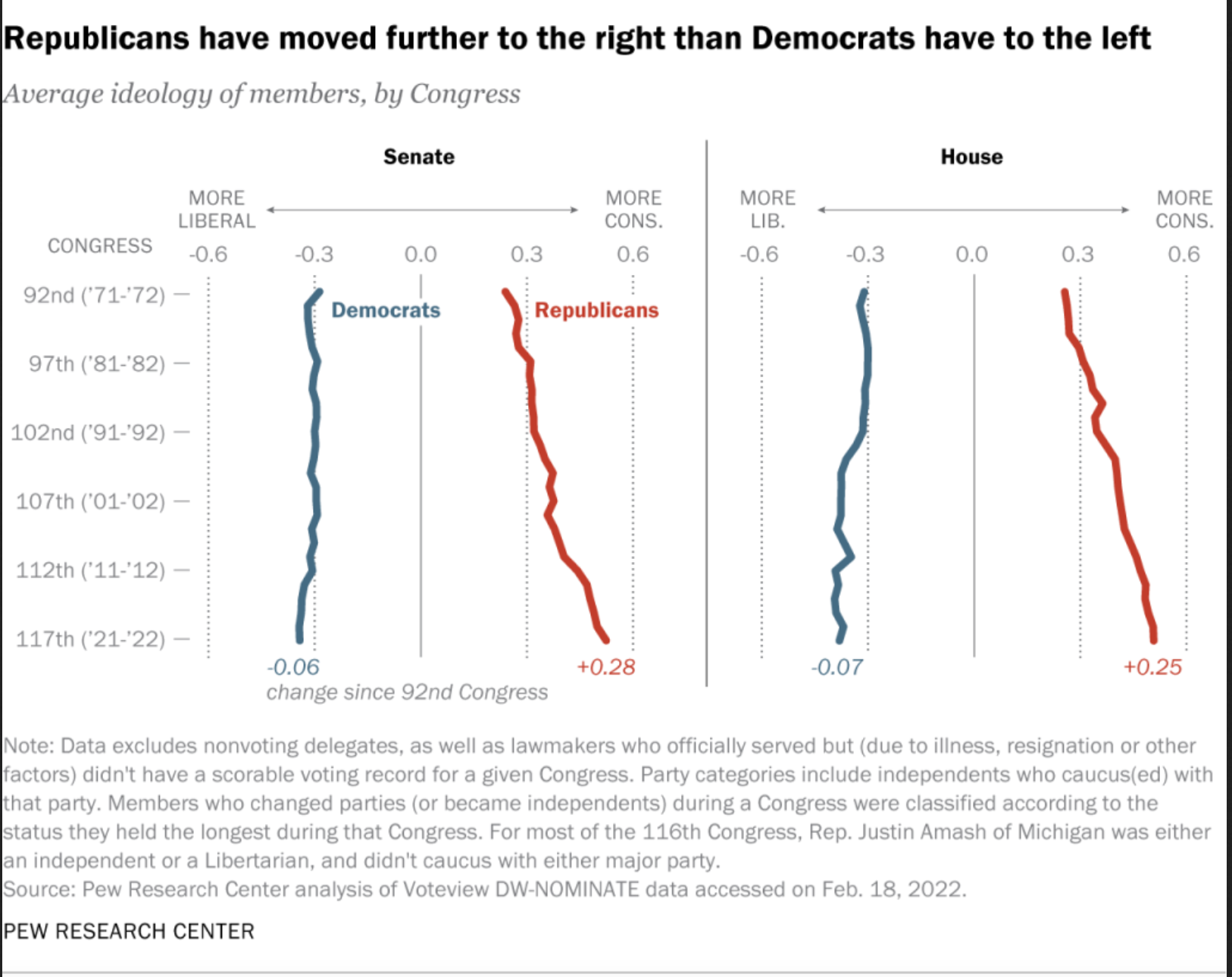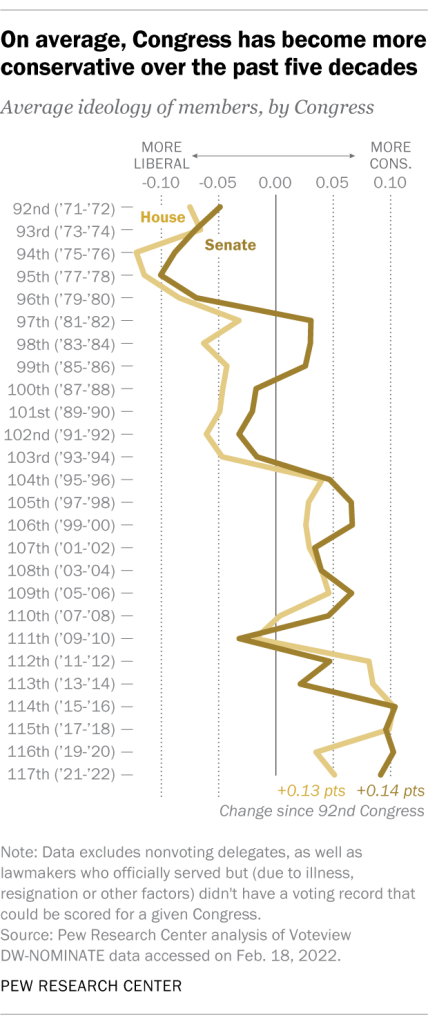Polarization Nation
Critical Analysis
Based on the data from the graph above, in the U.S. Senate, between the 92nd Congress (1971-1972) and the current 117th Congress (2021-2022), describe the ideological shift of the Democratic Senators.
Based on the data from the graph above, in the U.S. Senate, between the 92nd Congress (1971-1972) and the current 117th Congress (2021-2022), describe the ideological shift of the Republican Senators.
Based on the data from the graph above, in the U.S. House, between the 92nd Congress (1971-1972) and the current 117th Congress (2021-2022), describe the ideological shift between Republicans and Democrats.
Of the House and the Senate, over the past 50 years, which chamber of Congress has become more polarized (divided) between the two parties?
Based on the data from the graph above and below*, overall, has the U.S. Congress become more liberal or conservative?
Why have the two chambers of Congress both become more polarized (divided) between the two parties?
Both parties have grown more ideologically cohesive. There are now only about two dozen moderate Democrats and Republicans left on Capitol Hill, versus more than 160 in 1971-72. How does the lack of political moderates and the growing congressional polarization impact policy (see laws passed/Congress at bottom of visual extension)*?
How does this growing American polarization impact our country and culture even beyond politics?
Polarization sounds like a process of making things colder!!!! But it isn’t. And polarization also is not the same as disagreement about how to solve public policy problems, which is healthy and natural in a democracy. Polarization is about more than just having a different opinion than your neighbor about certain issues. Polarization occurs when we refuse to live next to a neighbor who doesn’t share our politics, or when we won’t send our children to a racially integrated school. The force that empowers polarization is tribalism: clustering ourselves into groups that compete against each other in a zero-sum game where negotiation and compromise are perceived as betrayal, whether those groups are political, racial, economic, religious, gender, or generational. In what way has your life become more polarized?
The geographic and demographic makeup of both congressional parties has changed dramatically. Nearly half of House Republicans now come from Southern states, while nearly half of House Democrats are Black, Hispanic or Asian/Pacific Islander. Explain why the geographic and demographic makeup of the House has changed even more than the Senate.
Learning Extension
Read the entire Pew report on Congressional polarization.
Action Extension
The Pew Center’s analysis is based on DW-NOMINATE, a method that uses lawmakers’ roll-call votes to place them in a two-dimensional ideological space. It is designed to produce scores that are comparable across time. This analysis focuses on the first dimension, which is essentially the economic and governmental aspects of the familiar left-right spectrum and ranges from 1 (most conservative) to -1 (most liberal). Take a look at your House Member and Senators voting record and see how they scored. Share the results with class.




